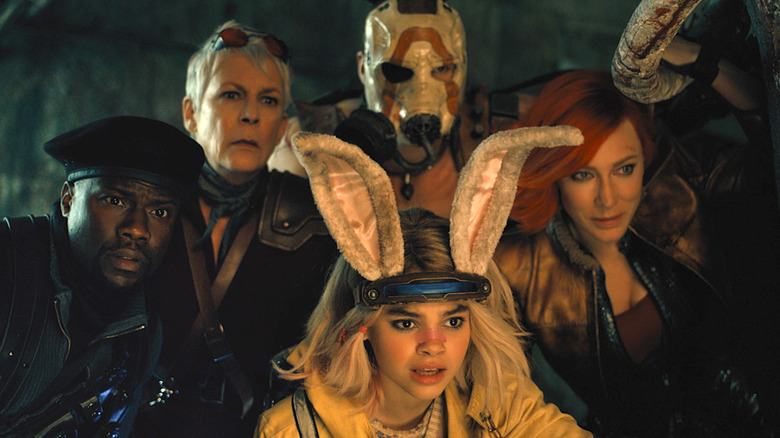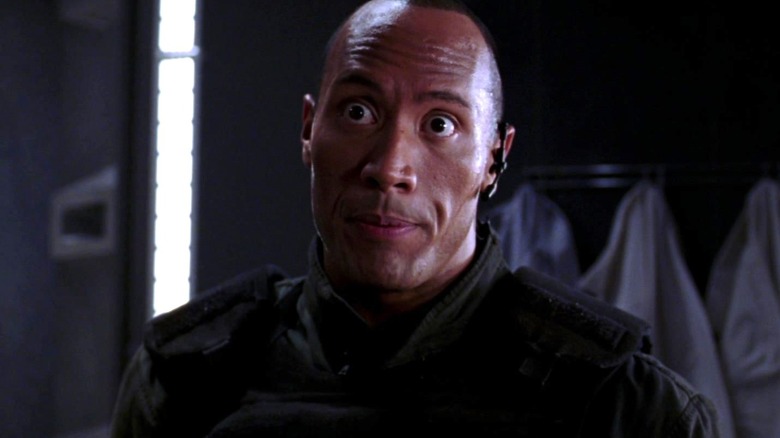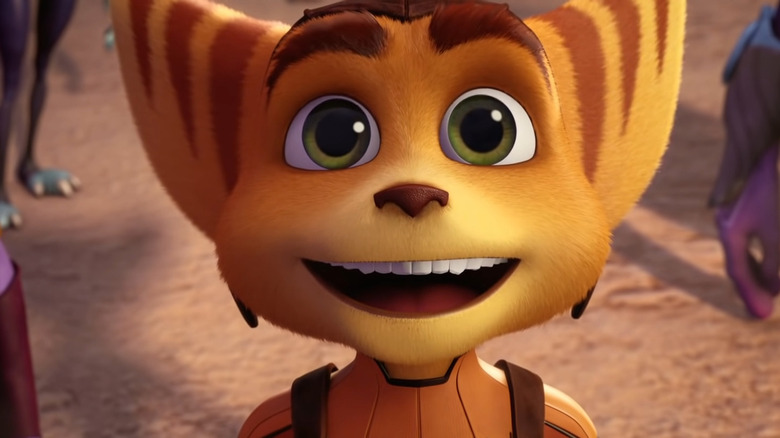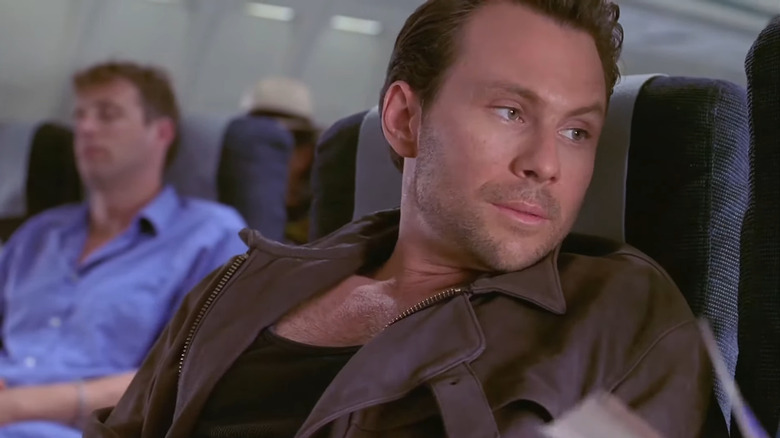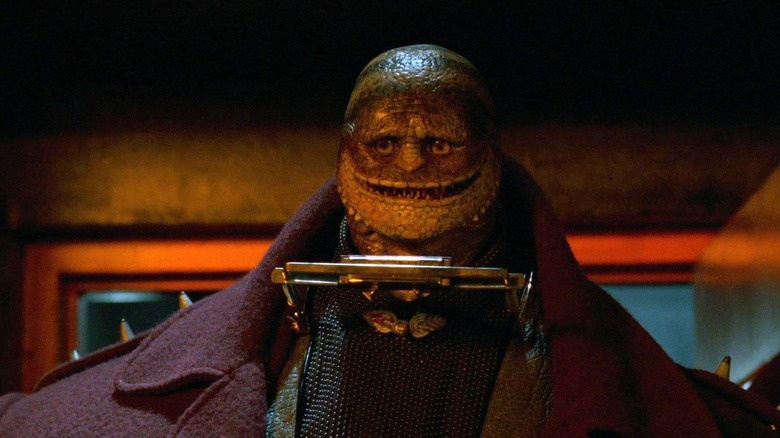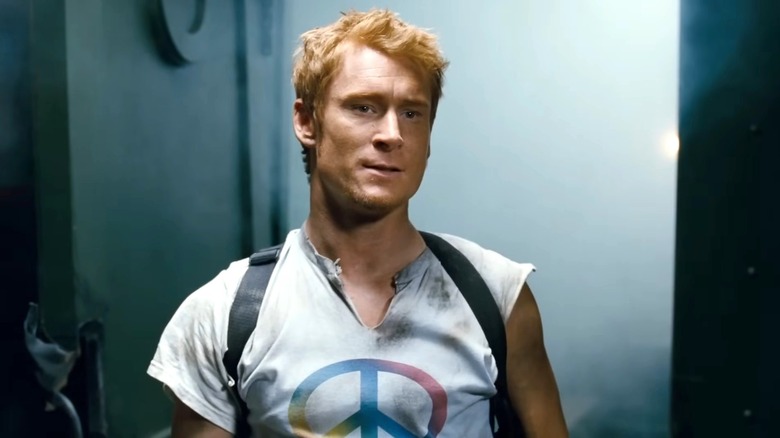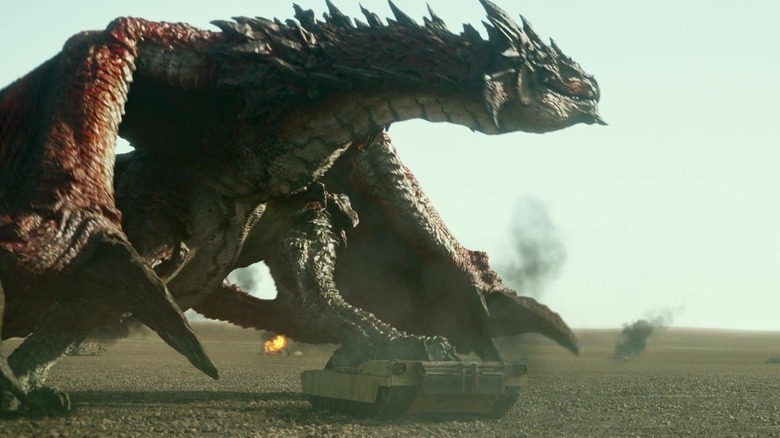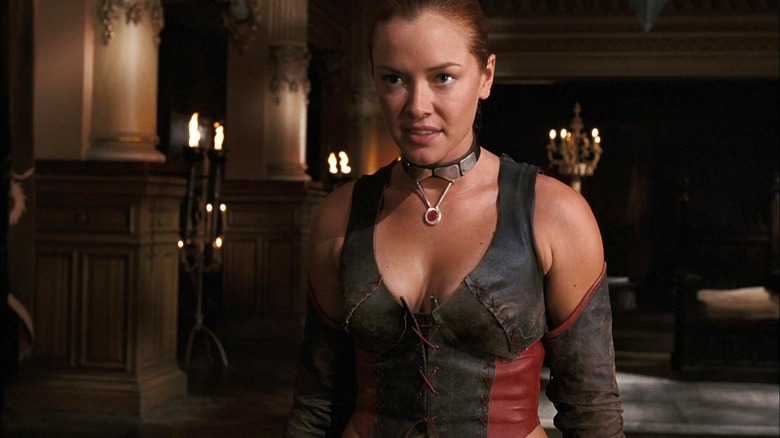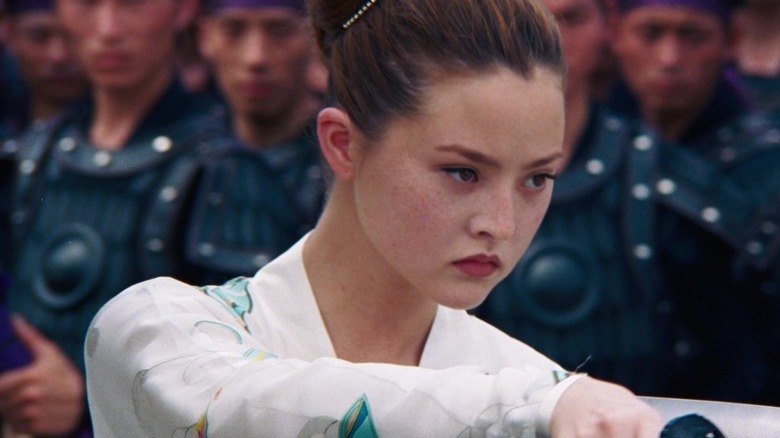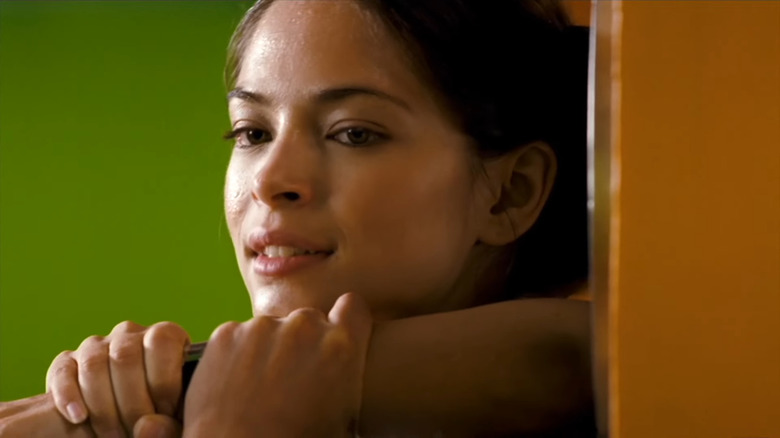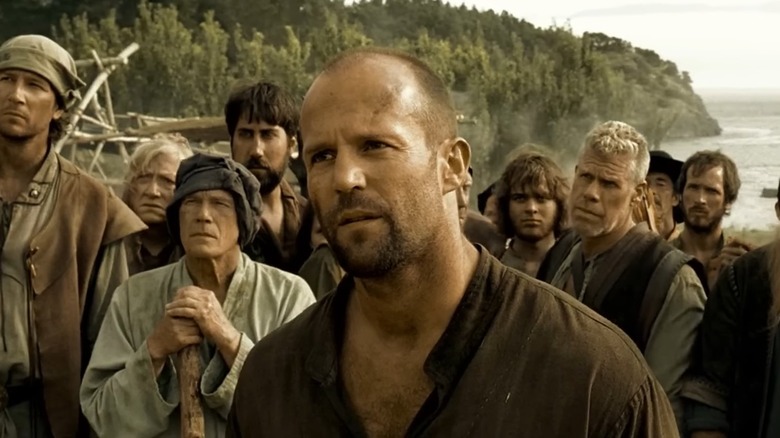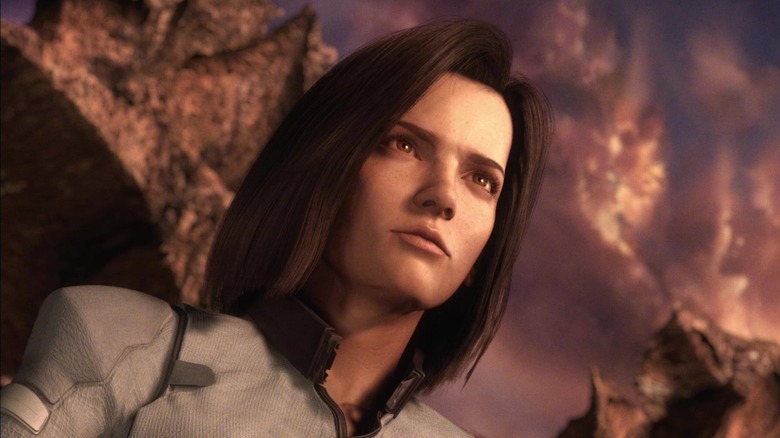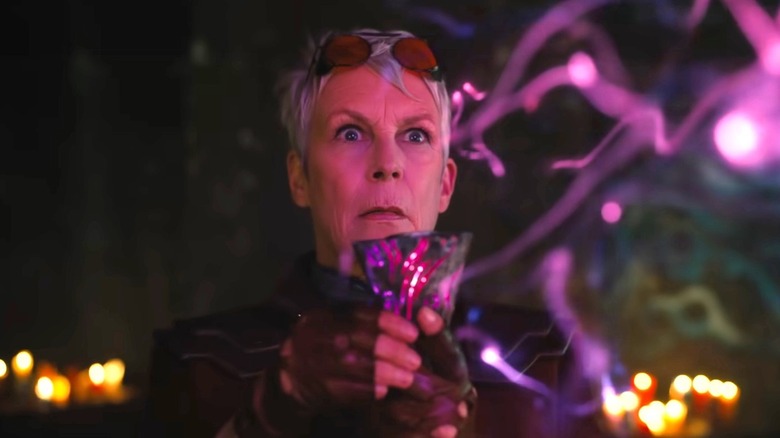The Biggest Video Game Movie Box Office Bombs
"Borderlands" bombed at the box office, becoming one of the most high-profile film failures of 2024 while joining an infamous list of video game movies that have tanked in theaters. There was a time when studio executives and fans blamed the video game adaptation curse, a seemingly made-up hoodoo that alleges this genre is doomed by the gods of cinema to fail. But the box office performances of "Sonic the Hedgehog" and "The Super Mario Bros. Movie" appeared to have broken the hex — although not entirely, by the looks of it.
In the context of dollars and cents lost, "Borderlands" may prove to be the biggest bomb in the genre's history to date, as it loses its investors close to $100 million — not including the marketing and promotional costs. However, there are a number of other video game-related films that also hold the ignominy of losing as much money as a small country's GDP. And of course, director Uwe Boll's name remains tied to many of these movies, even if he couldn't help but poke fun at the "Borderlands" disaster.
So let's take a look at the most notable video game movies that struggled to make back their production budgets. With hindsight, most of these should have stayed on the console or PC, as their respective journeys to the theaters proved to be nothing short of forgettable.
Doom
Andrzej Bartkowiak's "Doom" feels like the perfect homage to James Cameron's "Aliens," while being set in the "Doom" universe. A group of Space Marines — led by the man-mountain of muscle, Sarge (Dwayne "The Rock" Johnson) — explores a research facility's distress call only to encounter twisted terror and unimaginable horrors. The film also delivers the ultimate fan service moment in an iconic first-person scene, as Karl Urban's Reaper blasts his way through the corridors and destroys all the wretched creatures.
Game, set, match for "Doom," right? Not quite. The overwhelming negative reviews spread faster than the range of the game's signature BFG9000 gun, as audiences realized this sci-fi action B-movie would be better enjoyed at home, on DVD, where no one could see what you were watching. Years later, Johnson admitted that "Doom" lacked that special something — that allure — to get audiences excited. Ultimately, the movie struggled to make back even its production cost of $60 million, as its theatrical run ended with around $58 million.
While "Doom" slayed itself in 2005, it's still a million times better than the direct-to-video abomination known as "Doom: Annihilation." The latter makes the former look like "The Godfather" by comparison.
Ratchet and Clank
The "Ratchet and Clank" video game franchise continues to be popular because of the eye-catching locations, imaginative weapons, and easily likable protagonists: The feline-esque Ratchet and the cute-as-a-button robot known as Clank. Adapting this into an animated film seemed like a no-brainer, as there's already an established fanbase and the games' cutscenes serve as a prototype of what can be done.
Directed by Kevin Munroe of "TMNT" fame and featuring James Arnold Taylor and David Kaye, who voiced the characters in the video game series, alongside A-list names like Sylvester Stallone, Paul Giamatti, Rosario Dawson, and John Goodman, 2016's "Ratchet and Clank" set itself up to be the real deal. Unfortunately, the movie didn't stir up enough excitement or become the next big thing. The criticism of the film veered toward its animation style and how it served as an ordinary or average adaptation of the source material.
While that wasn't exactly a scathing assessment, "Ratchet and Clank" failed to attract families to the cinema, making only $14.4 million against a $20 million budget. It also proved to be the last-ever release for Focus Features' production label, Gramercy Pictures, which had only been revived a year earlier. Sadly, the poor box office performance of "Ratchet and Clank" served as the final nail in the coffin for Gramercy.
Alone in the Dark
Much like "Resident Evil," "Alone in the Dark" remains a fan-favorite series among the lovers of survival horror video games. In 2005, German filmmaker Uwe Boll — often cited as one of the worst filmmakers of all time — brought the adventures of private investigator Edward Carnby to life on the big screen. In typical Boll fashion, though, he took the decision to only loosely adapt the story and follow his own trajectory instead.
Whether it's the right decision or not is entirely open for debate, but can anyone honestly remember the plot of this movie? That said, the film contained considerable star power behind it, as Christian Slater plays Carnby, while Tara Reid and Stephen Dorff round out the cast as Aline Cedrac and Commander Richard Burke respectively.
Some critics called "Alone in the Dark" the worst movie of all time, while others deemed it the funniest. Regardless, it didn't exactly become a universally beloved adaptation of the popular video game franchise, receiving an abysmal 1% critical approval rating on Rotten Tomatoes. It also turned into a box office bomb, mustering only $10.4 million worldwide off a $20 million budget. Surprisingly, the film received a 2008 sequel, "Alone in the Dark II," though it wasn't directed by Boll nor did it feature the return of the original cast.
Super Mario Bros.
Long before 2023's "The Super Mario Bros. Movie" blew everyone away at the box office, another film about the world's favorite plumbers existed. Released in 1993, the live-action "Super Mario Bros." features the talents of Bob Hoskins and John Leguizamo as Mario Mario and Luigi Mario respectively, while Dennis Hopper stars as King Koopa. But rather than embrace the bright and colorful palettes of the Mushroom Kingdom, it decides to go full-on bleak dystopian chic, looking like a gonzo prequel to Alex Proyas' "Dark City." The film failed in every department, as even the late Hoskins admitted it was the most woeful and regrettable movie of his illustrious career.
Fans and critics agreed that this was more "Mamma mia" than "Wahoo," though it developed a cult following in the years after its release because who doesn't like dancing goombas in an elevator? "Super Mario Bros." might not have clicked in the '90s, but it wasn't the worst-performing video game movie of all time. The production cost $50 million, but the movie secured grosses of $40 million worldwide. Sure, the accountants cried into their spreadsheets about the negative balance, but it could have been far worse.
Postal
Hello, Uwe Boll! Fancy meeting another one of your projects here again. Released in 2007, "Postal" marketed itself as an edgy action-comedy, with a blurb from Icons of Fright referring to it as a "live-action 'South Park.'" Inspired by the second video game in the series, "Postal" sees Zack Ward play the gun-toting Postal Dude in a film that also features Osama bin Laden and George W. Bush as characters in a controversial storyline. In addition, J.K. Simmons, Rick Hoffman, and Boll himself make appearances here.
Like most of Boll's filmography, "Postal" received a brutal beatdown from critics, though there are some who consider it to be the director's best work and biting in its use of satire. Boll claimed that American theater distributors boycotted the release of "Postal," which is why it received only a limited run that made it dead on arrival at the box office. The film wasn't a smash hit globally either, as it crawled to $146,741 off a $15 million budget.
Boll tried to get "Postal 2" made through a Kickstarter campaign years later. However, it was canceled after fans pledged a smidgen under $30,000, while Boll sought $500,000 to make the sequel.
Monster Hunter
Put an asterisk next to Paul W.S. Anderson's "Monster Hunter." Even though the film cost $60 million to produce, it barely crossed over the $42 million threshold at the global box office. What's important to keep in mind here is that the film was released in December 2020. At the time, the world was still grappling with the COVID-19 pandemic and not many people ventured outside of their homes, as countries stayed in various forms of lockdown or applied restrictions to curb the spread of the virus. As a result, "Monster Hunter" wasn't the only film impacted financially during this strange time.
That said, the movie — based on the Capcom video game series where hunters battle monsters — didn't win over everyone in the popularity department, as it remains divisive among critics and fans. It shouldn't be an unusual feeling for the director or "Monster Hunter" star Milla Jovovich, though, as their previous dive into video game movies with the "Resident Evil" film series proved to be equally contentious. The "Resident Evil" movies, however, cleaned up effortlessly at the box office in comparison.
BloodRayne
The "BloodRayne" franchise has been a part of pop culture for over two decades now. Based on the video game series in which the half-vampire, half-human Rayne protects mankind from all kinds of ghouls and monsters, "BloodRayne" received its own live-action film in 2005, directed by Uwe Boll, who makes yet another appearance on this list and proves to be one of the select few filmmakers whose entire filmographies are rotten. Starring in the lead role is Kristanna Loken, whose career breakout came in 2003's "Terminator 3: Rise of the Machines." Loken is joined by Michael Madsen, Ben Kingsley, Michelle Rodriguez, Billy Zane, and Meat Loaf in this supernatural film that draws inspiration from the games.
Despite the stacked cast, "BloodRayne" received a stake in the heart from both critics and fans, while also securing six nominations at the Razzie Awards. Matters didn't improve much at the box office either, as the $25 million production raked in just $3.7 million worldwide.
Proving himself to be bulletproof to bad reviews and poor box office results, Boll received the opportunity to create two more "BloodRayne" sequels after this. However, those efforts went straight to DVD and Loken didn't return as Rayne, replaced by actor Natassia Malthe.
DOA: Dead or Alive
The "Dead or Alive" fighting game series might not be in the same echelon as "Street Fighter," "Mortal Kombat," or "Tekken" in the genre, but it boasts enough of an interested and engaged fanbase to merit a live-action adaptation. In terms of the 2007 film, "DOA: Dead or Alive," it is far from the worst video game movie, embracing elements of the franchise's overall silliness. In addition, the chemistry between the cast sizzles, as the likes of Jaime Pressly, Devon Aoki, Eric Roberts, and Kevin Nash deliver commendable performances in a wacky story.
Yet the film struggled to compete in a month jam-packed with bigger releases, such as "Ocean's Thirteen," "Surf's Up," "Fantastic Four: Rise of the Silver Surfer," and "Live Free or Die Hard." Ultimately, it bombed at the global box office with only $7.8 million against a $30 million budget. In retrospect, maybe the movie should have been named "DOA: Dead on Arrival" because that's exactly what happened here.
Street Fighter: The Legend of Chun-Li
Steven E. de Souza's film of "Street Fighter" might not be remembered as a paragon of cinema, but thanks to committed performances and it's-so-bad-that-it's-good dialogue, it holds a special place in video game movie history. It also happens to be the last movie Raul Julia was in before he died, where he delivers an inspired master class in acting as M. Bison. But rather than produce a sequel to a film that didn't fare badly at the box office ($99.4 million from a $33 million budget), a reboot titled "Street Fighter: The Legend of Chun-Li" materialized in 2009.
Directed by Andrzej Bartkowiak, who also helmed "Doom," and starring Kristin Kreuk as Chun-Li, Michael Clarke Duncan as Balrog, Chris Klein as Charlie Nash, and Neal McDonough as M. Bison, the film isn't short of recognizable faces. However, while "Street Fighter" harbors genuine joy and fun, "The Legend of Chun-Li" feels flatter than Colonel Guile's hairstyle. On Rotten Tomatoes, it holds 3% critical approval and 18% audience approval, signifying a universal thumbs-down for this movie.
The curiosity to see how bad it was didn't translate into ticket sales, though, as the $50 million production struggled to make $12.7 million worldwide. It's safe to say the legend of Chun-Li — well, at least this version — died then and there.
In the Name of the King: A Dungeon Siege Tale
The role-playing action game "Dungeon Siege" made a positive splash when it was released in 2002, receiving critical acclaim and selling a bucketload of copies. The 2005 sequel also garnered similar praise and added to the goodwill for the franchise. With such positive buzz and a built-in fandom, a live-action film proved inevitable. Then the news broke: Uwe Boll would direct a "Dungeon Siege" movie.
Released in 2007, "In the Name of the King: A Dungeon Siege Tale" stars Jason Statham, Claire Forlani, John Rhys-Davies, Ron Perlman, and Ray Liotta. Unquestionably, there was no shortage of established actors to elevate the material here. In addition, the film received a sizable budget in the form of $60 million, so perhaps this would be the first Uwe Boll-directed video game movie to succeed?
All hope was gone when the reviews dropped. This wasn't the next "Lord of the Rings," but more like "Lord of the Houseflies." One cannot even say it stank out theaters because hardly anyone watched it. By the end of its theatrical run, "In the Name of the King: A Dungeon Siege Tale" made only $13.1 million at the global box office. Incredibly, after such a monumental flop, Boll returned to direct two more sequels, "In the Name of the King: Two Worlds" and "In the Name of the King: The Last Mission."
Final Fantasy: The Spirits Within
Overseen by Hironobu Sakaguchi, the actual creator of the "Final Fantasy" series, the expectation for 2001's "Final Fantasy: The Spirits Within" went through the roof. Not only would it have the involvement of someone who understood the franchise inside and out, but the animation also looked incredible for its era. Throw in a voice cast including Ming-Na Wen, Alec Baldwin, Donald Sutherland, and Ving Rhames, and this should have been like printing money, right? Wrong.
First off, the film took over four years to complete, which resulted in the budget ballooning to $137 million. By comparison, "The Matrix" cost less than half of that ($63 million). Second, no one could doubt that "Final Fantasy: The Spirits Within" looked like a technical marvel for a film released in 2001. But it appeared to be a case where too much time went into the animation and not enough into the story, as reviewers and fans criticized the film for lacking the magic of the video game series. And finally, it bombed at the box office, reeling in only $85.1 million worldwide and failing to cover even its production costs.
Borderlands
Director Eli Roth said that he found the inspiration for his "Borderlands" adaptation after watching his dog poop. Strangely enough, that's what many fans felt like they watched after seeing the first trailer. The 2024 film loaded up the cast with celebrated, award-winning actors like Cate Blanchett and Jamie Lee Curtis, but the writing was on the wall when the movie took over four years to arrive after Roth was announced as the director.
Then it all but cemented its fate as a box office bomb-in-the-making after the "Borderlands" Rotten Tomatoes reviews were worse than anyone could have imagined. Despite the "Borderlands" video games possessing a strong sense of humor and madcap fun, critics and fans deemed this effort to be devoid of any of the qualities associated with the first-person shooter series.
"Borderlands" reportedly cost $110-120 million to produce, then received an additional boost of $30 million for advertising. The film didn't even manage to cover the advertising costs, as it made less than $25 million worldwide. The real wastelands here were the theaters that screened the movie since hardly anybody showed up.
Want to read more about this genre? Check out every live-action video game movie ranked worst to best.
